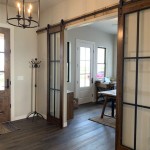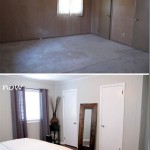How Much Do Interior Designers Charge For Consultation?
Engaging an interior designer for any project, be it a simple room refresh or a comprehensive renovation, typically starts with an initial consultation. This meeting serves as a crucial opportunity for both the client and the designer to establish rapport, discuss project goals, and determine the scope of work. Understanding the cost associated with this initial consultation is vital for budgeting and making informed decisions about proceeding with the project. The pricing structure for interior design consultations can vary widely, depending on factors such as the designer's experience, location, project complexity, and the services included in the initial consultation.
The fees charged for interior design consultations can range from being completely free to several hundred dollars or even more. It is uncommon, but not unheard of, for established designers with a significant reputation to charge substantial fees for their initial time and expertise. Conversely, newer designers seeking to build their portfolios might offer free consultations to attract clients. The average cost generally falls somewhere in between, typically ranging from $50 to $500 for a one to two-hour consultation. This range considers the diverse factors influencing interior design pricing.
This article will delve into the various factors that impact the cost of an interior design consultation, explore different pricing models used by interior designers, and provide insights into what clients can expect during the initial meeting. By understanding these elements, clients can navigate the process of hiring an interior designer with greater clarity and confidence, ensuring they choose a professional who aligns with their needs and budget.
Factors Influencing the Cost of Interior Design Consultations
Several key factors contribute to the variation in consultation fees among interior designers. Understanding these factors is essential for understanding the range of costs clients may encounter and for evaluating whether a particular designer's fees are reasonable considering the services being offered.
Experience and Expertise: One of the most significant determinants of consultation costs is the designer's level of experience and expertise. Designers with years of experience in the industry, a proven track record of successful projects, and specialized skills in areas like sustainable design or historical restoration can command higher fees. Their extensive knowledge allows them to quickly assess a space, identify potential challenges, and offer valuable insights during the initial consultation. A designer with certifications or affiliations with professional organizations like the American Society of Interior Designers (ASID) often indicates a commitment to professional standards and ongoing education, which can also justify higher consultation rates.
Location: Geographic location plays a significant role in determining interior design consultation fees. Designers in metropolitan areas with high costs of living, such as New York City, Los Angeles, or San Francisco, typically charge more than designers in smaller towns or rural areas. This is due to factors such as higher overhead costs for office space, marketing, and other business expenses. The demand for interior design services in a particular area can also influence pricing, with higher demand generally leading to higher fees. Furthermore, the average income levels in a region can affect the perceived value of design services and, consequently, the rates charged.
Project Complexity: The complexity and scope of the project under consideration will also have a direct impact on the consultation fee. A simple consultation for selecting paint colors or rearranging furniture in a single room will typically cost less than a consultation for a complete home renovation involving structural changes, electrical work, and plumbing modifications. Complex projects require the designer to spend more time assessing the space, reviewing architectural plans, and considering various design solutions. They may also need to coordinate with other professionals, such as architects, contractors, and engineers, to determine the feasibility of the project. Therefore, the more complex the project, the more time and expertise required from the designer, and the higher the consultation fee is likely to be.
Services Included in the Consultation: The specific services included in the initial consultation can vary significantly from designer to designer. Some designers offer a basic consultation that focuses on discussing the client's needs and providing a general overview of the project. Others offer a more comprehensive consultation that includes a detailed site assessment, preliminary design concepts, space planning suggestions, and material recommendations. Some consultations might include a written summary or mood board following the meeting. Designers who offer more comprehensive services typically charge higher consultation fees to reflect the additional time and effort involved.
Designer's Business Model: The way an interior designer structures their business can also affect consultation fees. Some designers operate as independent freelancers, while others work for larger design firms. Freelance designers may have lower overhead costs and be more flexible with their pricing. Design firms, on the other hand, may have higher overhead costs but can offer a wider range of services and a team of specialized professionals. Therefore, the type of business model employed by the designer can influence the consultation fees charged.
Common Pricing Models for Interior Design Consultations
Interior designers employ various pricing models for their consultation services. Understanding these models can help clients anticipate costs and compare quotes from different designers. The most common pricing models are hourly rates, flat fees, and complimentary consultations, each with its own advantages and disadvantages.
Hourly Rates: Charging an hourly rate is a common pricing model for interior design consultations. The designer bills the client for each hour spent on the consultation, including time spent traveling to the client's home, assessing the space, discussing design ideas, and preparing any written materials after the meeting. Hourly rates can vary significantly depending on the factors discussed earlier, such as experience, location, and project complexity. On average, hourly rates for interior design consultations range from $50 to $250 or more per hour. The benefit of this model is that it provides transparency and allows clients to pay only for the actual time the designer spends on the consultation. However, it can be difficult for clients to estimate the total cost of the consultation upfront, as the amount of time required may vary.
Flat Fees: Some interior designers offer a flat fee for initial consultations. This means that the client pays a fixed price for a predetermined set of services. The flat fee typically covers a specific amount of time, such as one or two hours, and includes services such as a site assessment, discussion of design goals, and preliminary design recommendations. The advantage of this model is that it provides price certainty, allowing clients to budget accordingly. However, it is important for clients to clarify the scope of services included in the flat fee to ensure it meets their needs. If the consultation exceeds the allotted time or requires additional services, the designer may charge an additional hourly rate or a separate fee.
Complimentary Consultations: Offering complimentary consultations is a strategy some interior designers utilize to attract new clients. These no-cost consultations typically involve a brief meeting to discuss the client's project and assess their needs. While providing an opportunity for the designer to showcase their expertise and build rapport, complimentary consultations usually have limitations. The scope is often restricted to a basic discussion of the project and may not include a detailed site assessment or specific design recommendations. These consultations primarily serve as a sales tool for the designer to secure the client's business for subsequent design phases. It's essential for the client to understand the limitations of a free consultation. A designer might offer valuable insights but mostly focus on outlining how their services can meet the client's needs, aiming to transition into a paid, more in-depth engagement.
Combination of Pricing Models: Some designers use a hybrid approach to pricing, combining elements of hourly rates and flat fees. For example, a designer might offer a flat fee for the initial consultation, which covers a specific set of services, and then charge an hourly rate for any additional time or services required. Or, they might offer a flat fee for a package of consultations, providing a discount compared to paying hourly for each session. This allows for flexibility while maintaining transparency regarding costs.
What to Expect During an Interior Design Consultation
Regardless of the pricing model used, clients can generally expect a similar process during an interior design consultation. Understanding what to expect can help clients prepare for the meeting and ensure they get the most out of the experience. The consultation typically involves an exchange of information, assessment of the space, and a discussion of project goals and design ideas.
Information Gathering: The initial stage of the consultation typically involves the designer gathering information about the client's needs, preferences, and budget. The designer will ask questions about the client's lifestyle, aesthetic tastes, functional requirements for the space, and any specific design challenges or concerns. Clients should be prepared to provide detailed information about their vision for the project, including inspiration images, color preferences, and any existing furniture or décor they wish to incorporate. Sharing information openly and honestly is crucial for the designer to understand the client's goals and develop a suitable design plan.
Site Assessment: The designer will conduct a thorough assessment of the space, taking measurements, noting architectural features, and evaluating the existing lighting, layout, and materials. They may take photographs or create sketches of the space to help them visualize design options. The site assessment allows the designer to identify potential challenges, such as awkward layouts, limited natural light, or structural limitations. It also helps them understand the existing conditions and determine how best to transform the space to meet the client's needs.
Discussion of Design Ideas: Following the information gathering and site assessment, the designer will discuss design ideas and potential solutions with the client. This may involve presenting preliminary design concepts, suggesting space planning options, offering material recommendations, and providing examples of similar projects. The designer will collaborate with the client to refine the design ideas and ensure they align with the client's vision and budget. It is important for clients to actively participate in this discussion, providing feedback and asking questions to ensure they understand the proposed design solutions.
Project Scope and Timeline: During the consultation, the designer will also discuss the scope of the project and establish a preliminary timeline for completion. The project scope outlines the specific tasks and services that the designer will provide, such as space planning, furniture selection, material specification, construction management, and installation. The timeline provides an estimated timeframe for each phase of the project, from initial design to final installation. Establishing a clear project scope and timeline helps to manage expectations and ensure the project stays on track.
Contract and Payment: If the client decides to proceed with the project, the designer will typically present a contract outlining the terms and conditions of the engagement, including the scope of services, payment schedule, and responsibilities of both parties. The contract should be reviewed carefully before signing to ensure that all terms are clearly understood. The designer will also discuss payment options and provide information on how to make payments. Understanding the contract and payment terms is essential before moving forward with the project to avoid any misunderstandings or disputes.

How Much Does An Interior Designer Cost Pacaso

Hiring An Interior Home Designer Design Cost Questions

Interior Designer Cost Fees Fixr

The Complete Guide To Structuring Interior Designer And Architect Fees Part 1 Types Of Services Corresponding

How Much Does It Cost To Hire An Interior Designer Sfd

The Complete Guide To Structuring Interior Designer And Architect Fees Part 1 Types Of Services Corresponding

Interior Designer Cost Fees Fixr
Interior Design Packages What To Include Examples Designfiles Blog

Interior Designer Cost Fees Fixr

Interior Designer Cost Fees Fixr
Related Posts








